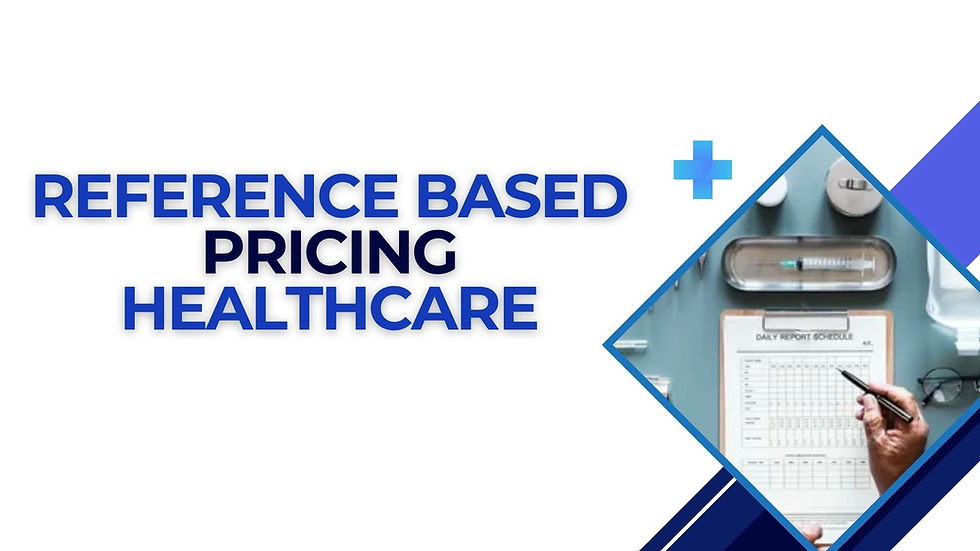What You Need to Know About Reference-Based Pricing in The Healthcare Sector
- Eric Brown

- Feb 5
- 1 min read
The healthcare industry utilizes Reference-Based Pricing (RBP) as an innovative plan to control costs. RBP operates differently from conventional insurance because it creates standard service prices using Medicare data or verified pricing standards. Employers, together with insurers and patients, benefit from this strategy as it makes cost management more effective and transparent.

How Reference-Based Pricing Works
The system establishes defined limits for service reimbursements with respect to medical treatments. Insurers pay medical costs per established industry-standard prices instead of accepting any price the health provider sets. Furthermore, the provider must agree to accept payments within this pre-set amount but patients may need to pay any remaining costs which exceed that limit through a negotiation or existing process.
Benefits and Challenges of RBP
Benefits:
Patients, together with their employers, gain transparent visibility into healthcare payment expenses.
Insured parties and employers can decrease their total healthcare expenses through a reference-based pricing system.
Patients who want cost control can make comparisons to find providers with more reasonable prices.
Challenges:
The practice of balance billing presents financial risks to patients because some providers charge above-reference prices.
Employers, together with insurers, need to maintain straightforward communication and negotiation processes to stop billing disagreements from occurring.
In Conclusion
The healthcare payment system transforms through Reference-Based Pricing because it creates more transparent pricing structures and cost reductions. However, RBP implementation needs proper execution or else patients could encounter unexpected medical expenditures. Stakeholders, including employers, insurers, and policymakers, need to train participants about worth-based payment strategies while negotiating balanced pricing agreements to maintain RBP as a cost-effective healthcare measure.


Comments